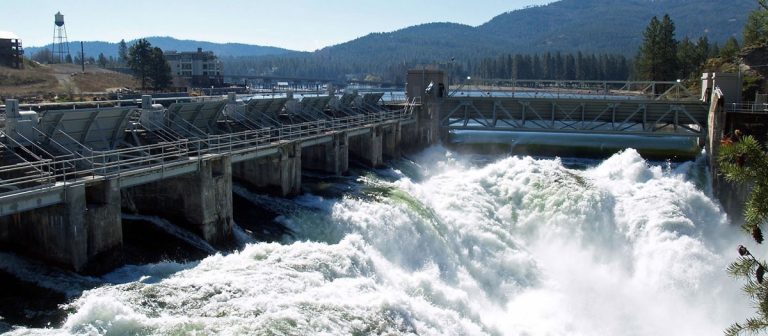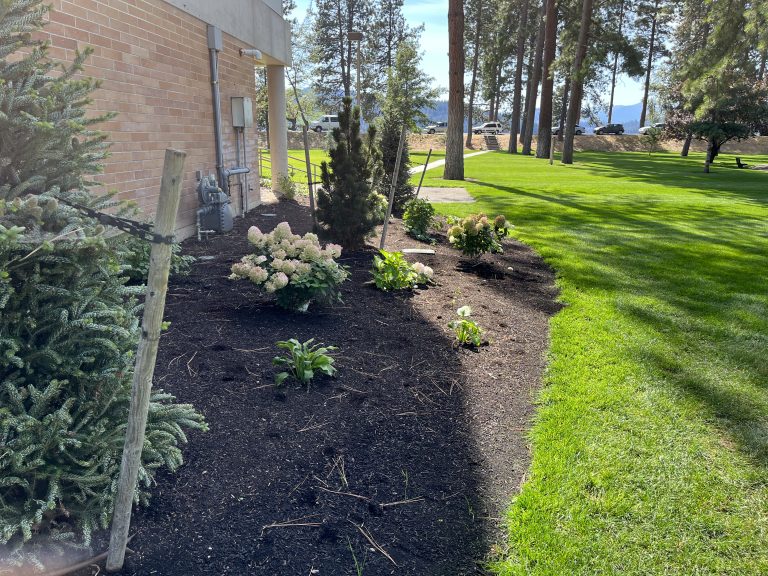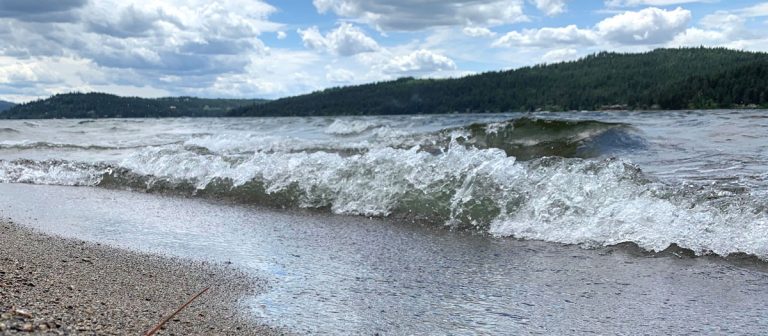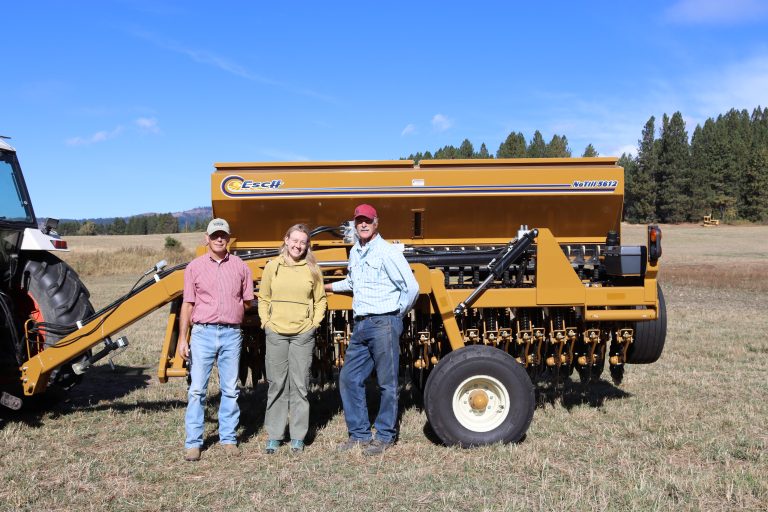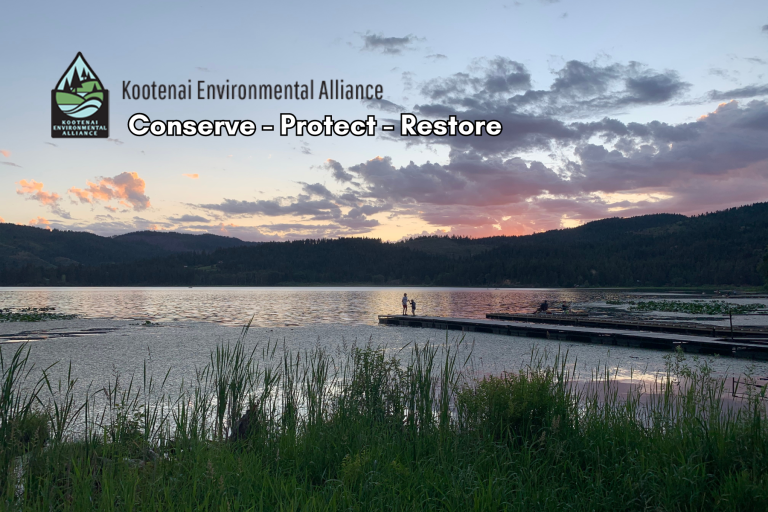“What if this is as good as it gets for Coeur d’Alene Lake?” Derek Forseth asked as he introduced the panel at the Environmental Symposium, hosted by the Northwest Environmental Business Council on November 6, 2025. The panel session, A Case Study: The Health and Future of Lake Coeur d’Alene, presented Coeur d’Alene Lake as the poster child of the symposium, which was themed, Inland Northwest; Water Under Pressure.
Panelists included Caj Matheson, Director of the Coeur d’Alene Tribe’s Natural Resources Department and a member of the Coeur d’Alene Tribal Council; Dan McCracken, Coeur d’Alene Regional Administrator for the Idaho Department of Environmental Quality; and Sharon Bosley, Executive Director for the Basin Environmental Improvement Project Commission. Forseth, the session moderator, is the current Vice-President of the NEBC Board of Directors and Chief Executive Officer/Principal Engineer at Alta Science and Engineering, Inc. The panel discussion encompassed issues threatening the lake’s water quality, what is being done about it, and a look ahead at the future.
Forseth posed the conundrum of mixed messaging in the media about Coeur d’Alene Lake, reminding us of articles referring to “dangerous cocktails” and threatening trends. Meanwhile, we hear about Coeur d’Alene being a favorite destination and how the “crystal clear” waters of the lake are touted in tourism-based publications and online resources. So, he asks the panel… “Is it toxic?”
“It depends on who you are,” said McCracken. “If you are human, you are ok. If you are plankton, you might be in trouble.” He explained that the thousands of samples collected by DEQ from the northern end of the lake since the 1990s show that we routinely meet the State of Idaho’s human health water quality criteria. However, the lake frequently exceeds criteria for protection of cold-water aquatic life. The plankton in the lake are inhibited. We have fish that survive but microorganisms are affected by toxicity.
Caj Matheson respectfully disagrees. He said, “It depends on how you look at the lake.” He emphasized the lake needs to be looked at as a whole ecosystem. He explained that the sediments in the lakebed can be considered the largest mine waste repository in the world. “Is there potential danger? Yes, there is. There’s a monster lurking at the bottom of the lake.” He warned that if we don’t manage our (nutrient) inputs correctly, we can “wake the monster up.”
Forseth then shifted the focus to current efforts. He shared with the panelists that he recently re-read a report from 1933 from the Coeur d’Alene River and Lake Commission that discussed metals pollution and how to protect the river and lake. He said we are still –
more than 90 years later – discussing those same concerns. He asked the panel, “Are we taking actions in the right places?”
Matheson feels there are good things that are happening and much more ahead that’s needed. For example, Governor Little’s Leading Idaho Initiative for Coeur d’Alene Lake with funds to protect the lake “was the first time a Governor in Idaho had done that. However, that was millions. What we need will be a multi-billion-dollar effort.” He explained there is still concern regarding the zinc cleanup and what that does to productivity. The Tribe is seeing anoxic conditions in the southern end of the lake all summer. When zinc declines further, we expect things to get worse.
McCracken agreed the Leading Idaho funds have been positive. He said “We expect to see 8-9,000 pounds of annual phosphorus input being eliminated from point and nonpoint sources. However, the NAS warned us that growth and climate change will be working against us. We just need to keep our foot on the gas.”
Bosley highlighted that “two of the largest loaders of metals have been taken care of to some degree.” She explained that Central Treatment Plant upgrades as well as priority work up East Fork Ninemile Creek have been completed. “A USGS 30-year study shows zinc and lead have declined 25 and 75% in the South Fork of the Coeur d’Alene River. Phosphorus has also been reduced.” She said that there is still a lot of work to do in the Lower Basin, but “it’s nice to see improvements. In the 1930s, they didn’t even find any macroinvertebrates in the river, but now we are seeing improvements in the food chain.” She said the improvements in the Upper Basin have helped bring clarity and health back to the river.
Forseth then asked “for the next five to ten years, what’s most important?” The common theme among panelists was continued effort, working together, and zooming in on nonpoint sources of phosphorus (collective sources from across the landscape, such as soil erosion, fertilizers, animal wastes, septic systems, etc.). Matheson indicated that the Tribe refers to the issue as “death by a thousand cuts. We can address point sources, but nonpoint source is what we really need to bring down a notch or several notches. We all need to get past our hesitation to address nonpoint source pollution…as a region, we need to decide what we want to address.”
McCracken indicated this is where he and Matheson agree. With the recent Leading Idaho efforts, “we’ve been going after big successes -the low-hanging fruit has been point sources. It’s easier to deal with water in a pipe. It just takes money. When it comes to dealing with nonpoint sources, every person in the watershed has a role to play.”
Bosley highlighted the funding issue. She explained, “we need continued monitoring, and we need consistent funds to help understand what things look like and how things change.
Stable consistent support is needed to ensure these efforts continue.” She also stressed the need to work together and to get information out to the public. “With (recent improvements), people think it’s over. It’s a cautionary tale. We all still need to work together to make this happen.” She added that “science moves faster than culture – how do we change the culture?” She feels continued efforts are needed to get “tangible information out and give (people) actions to implement to make them think about their impacts… It will be up to individual action to help us protect this gem of ours.”

